A little while ago I mentioned that I had started watching the 1966 TV series The Green Hornet, after a chain of events I’ve already explained. At the end of said post, I promised I would back up part 1 (the homework) with part 2 - the actual commentary.
What happened to that? Well not a lot - due to a very lot of other stuff happening (holidays abroad, coronavirus, etc.) it kind of got put on the back burner. It wasn’t until I was watching a fresh episode just last night that I realised I hadn’t come up with the goods.
Here we are then - is the 1966 version of The Green Hornet anywhere near as good as people remember? Will it live up the its hype? Will I find it entertaining, or will it turn out to be one of those shows that doesn’t age well at all?
Let’s find out today, as we play Nostalgia vs NOTstalgia part 2 - the Green Hornet 1966 edition.
As with most of my reviews, I’ll keep this to three headings:
Limited
Clocking in at barely 26 minutes an episode (no doubt billed as 45 minutes so the networks it was syndicated to could shoe-horn in a tonne of commercials), the show makes the most of what it has. Gone are clunky expositions, long wind-ups that you need to remember later, overly elaborate build-ups and teasers. Instead we have action right from the outset - you know when you watch a show today, and you get plonked right in the middle of the action as a teaser? Then you get a title card or even intro music if they think people have the attention span? Straight after that you’re told something along the lines of ‘TWO DAYS EARLIER’ and they show you 10 minutes of lead-up? Yeah, none of that. This show drops you in the action, and the whole flashback to the explanation is jettisoned for a few throw-away lines between Britt and Kato, to the effect of ‘it’s a good job [main guest star’s character] gave us the right address’, ‘yeah, who knew after ten years of working for the mob he’d want to turn them all in to the police?’. Simple, easy - and most importantly, quick. It makes me appreciate just how much you can get done in a short space of time. The scriptwriters were no slouches here, folks, and while they were writing for an audience very different from me, I like the style. It’s all killer, no filler - they don’t waste a second of screen-time, so if they focus on Britt’s face for longer than necessary it’s to prove a point or show you something, not just for shiggles (or ratings. Let’s face it, Van Williams circa 1966 is a very attractive man). However, sometimes you do think an extra few lines or seconds of screen-time about the guest star of the week’s character would have been beneficial. But hey, it’s all seconds ticking away, and having someone speak for an extra 30 seconds means you have to cut that expensive shot of the Black Beauty taking out a fence with its rockets.
The pace is a welcome change from shows I’ve seen recently, where it’s taken forever to build up to something (sometimes only to let you down). Oh, and you can watch about 5 or 6 episodes of this show in the same time it would taken to watch Interstellar, and I would consider those episodes time better spent, to be honest.
But if it’s over so quick, what can it have achieved?
Lego PS4 Games
Ok, so they don’t actually have Lego PlayStation games in The Green Hornet. But they do have something in common - playability. You have a long day at work, struggling with frustration at inoperative tech. or missing paperwork, and when you get home there’s Call of Duty or Batman Arkham Whatever waiting for you. But it’s all so much effort - you just want something relatively easy, something to help you unwind and be happy, not something that will twist your brain in (more) knots and frustrate you. So instead you go for that Lego game. Yes, it’s simplistic. Yes, there’s no real danger because when you die, you just respawn where you were and all is forgiven. No-one really dies (except the bad guys) and you can actually achieve the end without tearing your hair out or throwing things across the room.
That’s what this series is like. Yes, you can get into something like Altered Carbon or Black Mirror, but it may leave you unsettled or with questions that will bug you for the next week. The Green Hornet is eye-friendly, brain-friendly, and it wraps up all of its threads. There’s no ‘wait a minute - how did the bad guy know about the warehouse?’ or ‘how did they get there so fast when the other dude said no-one knew the location?’. And in every situation when they bust through a door with the Hornet Sting and the bad guy inevitably tries to jump them, Kato has them all floored without breaking a sweat, and the Hornet dives straight in and punches guys in the face left right and centre. Why people still try to take them down, one has to wonder.
However there are sometimes moments where it’s a little too easy - sometimes their plans just work, when you're expecting them not to. Sometimes the plan doesn't work, but then inadvertantly fixes something else with the plot. Although they did do a few two-parters during the only season, they did try to wrap things up pretty quickly, so a sudden swing in their direction was met with surprise but acceptance by the characters more than one. One thing though: no-one recognises the bad guy under a disguise no more amazing than the Green Hornet’s - but then, it has the same rules for everyone. People who know Britt Reid don’t recognise the Green Hornet’s voice or face when they’re in the same room with him, so that’s why Britt Reid doesn’t recognise the guest star of the week’s voice when they’re the bad guy all along. I like it; it’s continuity.
Stars
We have to talk about Britt Reid. He’s charming, well-spoken and although sometimes his eye is caught by a good-looking woman who knows her own mind, he doesn’t fall for any feminine wiles. He appears to run his late father’s newspaper and TV news empire with consideration and forethought - although we don’t see much of what he does, other than appearing on high impact news broadcasts and using the Daily Sentinel as a way through closed doors, his staff appear to appreciate what he does, and it’s mentioned a few times that the DS is a proper newspaper, not a ‘gossip sheet’ or ‘toady rag’. When he’s the Hornet, he’s mean and when he says things like ‘you don’t want to cut me out of this - it wouldn’t go well for you’, you think, uh… actually? Let’s not chance that, bad guys; just do as he says.
Also, he’s played by Van Williams. He had a superhero jaw before there were superhero jaws, a friendly face but also the ability to smack you upside yours without too much effort, and he certainly looked the part of a cunning strategist. And, let’s be honest, I wouldn’t have kicked him out. He could read me the phonebook and I’d enjoy it.
Which brings us to Kato. This show would arguably have been much bleaker in its one run of 26 episodes if Bruce Lee had not graced it with his much-restrained but effective flair. At the beginning of the series he barely gets a word in - he might get an ‘ok’ or a ‘right away’, but mostly he’s there to stand still, fold his arms menacingly, stand too close to a target so he bricks it and tells the Hornet everything, and sometimes nod. It must have been demoralising for Lee. However, Van Williams decided this wasn’t very fair and started to ask the showrunners - shouldn’t the ‘sidekick’ get more lines? Shouldn’t people see what he did between wearing the black chauffeur’s outfit? If we don’t know anything about Kato, why would we care? How do we even know if he’s loyal to Britt? Just because he doesn’t get the chance to speak?
Some of this probably came out of the offscreen friendship they appeared to share. Some of this probably came out of Williams not being a complete narcissistic arsehole. Whatever the real reason, he did mither The Powers That Be until Lee began to get more and more words per episode. He went from a silent nod at the wheel of the Black Beauty to lines like ‘Are you sure? You know this is a trap, right?’ Getting a word in is one thing, but to get lines that make the main character think, to question what he’s doing - that’s a big step up, scriptwise. This continued until we even got an episode based in Chinatown, where Kato ends up settling a personal vendetta against a thug who got one over on him earlier in the episode. When he says to Britt ‘When we get there, the dude is mine’, Britt’s only response is the very correct ‘you’re on’. Friends indeed.
Let’s not forget the guest stars. From Mako to Star Trek’s own Jeffrey Hunter, people today may not recognise any of the stars who trot across the screen, but back then it was a veritable cavalcade of Who’s Who of the character actor’s world. From growing up watching things like Remington Steele, I recognise a few of the faces, albeit much younger than they were by the time I saw them in the 80s, but that also gave me a feeling of already being part of the series. Whether or not that’s the goal of getting in guest stars in the first place, it certainly adds to things when you’re messaging your sisters with ‘Captain Pike is alive and well, living in America running a construction site close to the Green Hornet’s backyard’. Good times.
And so to the conclusion; what do we make of all this? Does it hold your attention? Is the acting good enough? How has it aged?
For me personally: it’s ace. I could watch seasons and seasons of this stuff. It’s accessible, it adds up, and while it’s not at all any kind of challenge, it’s very welcome after a long day at work. The stars are fun (and nice to look at), the cases are different enough that you don’t get episodes confused, and all in all it’s a fun little show that runs so short, you don’t have time to look at your phone or get bored. By contrast, I tried rewatching season 1 of The Man from U.N.C.L.E., but it was long, a little padded, and not so much fun at all. (Granted, season 2 was when there was much more Illya Kuryakin, but that’s a post for another day.)
How does the series match up against the 2011 film?
While the movie dumbed-down Britt to give Lenore Case (the ‘secretary’) a pivotal role, it also provided Kato with an actual back story and a relatively huge role. It also felt like a double episode of the show, with more budget and more time to flesh things out. It was also an origin movie, obviously with people in charge hoping it would spawn a few sequels but it never did. Sometimes I wonder what a sequel would have been like, and if they could still do one. And then sometimes I think they should instead use it as a springboard for a Netflix show instead, with someone like Jensen Ackles as Britt Reid / the Green Hornet and Jay Chou (again) or Daniel Wu as Kato. They could go Gotham ‘fun’ or Daredevil dark - it would be up to them. Maybe even - and this would be interesting if they could pull it off - Gotham fun when it’s Britt and his gadgets whizz and Daredevil dark when it’s the Hornet and Kato. Flip from Technicolor to washed out contrast, from humour to intimidating / grimdark.
I digress.
Yes, the series is still good to watch and still more fun that some other modern series are now. Yes, the movie is also fun, with some welcome modern tweaking to certain characters. For me personally the only drawback to the movie was Seth Rogen; he’s funny and he fits this version, but I don’t think there’s anything to explore for a sequel.
In conclusion? On balance it hasn’t aged badly. There are a few moments where it’s implied the women are only ‘women’ and can’t be expected to do much, but then Lenore Case thinks ahead and takes a tracker with her, then when she’s kidnapped (which wasn’t really much of an outside chance considering the situation) she has it in her bag the whole time, furiously pressing on it for help. Hitting two dudes with a tall lamp, making her getaway and stealing their car to do it was nice to see - and this was 1966. Kudos to Wende Wagner for making it look so easy. What did make me laugh was the Hornet climbing up the conveyor belt she was roped to (about to get her head chopped off at the top) and panicking because he can’t get her ropes undone. And there’s Kato at the bottom, just pressing the ‘stop’ button. It’s the simple things that make me chuckle.
So there we have it. 1966 series: good times. 2011 movie: good times. Neither of these productions is supposed to set the world on fire or change the way we look at entertainment. But both of them are just plain fun without too many strings, and for that they both land in the ‘rewatchable’ category for me. (Maybe the series a little more.)
And that’s all the news that’s fit to print. While the world is losing its collective shit over this COVID-19 debacle, I’ll now return to staying home and watching more media. Heavy is the burden of being me.
Peach and lube, people. Peach and lube.

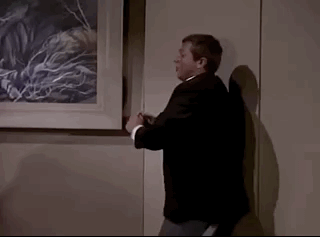
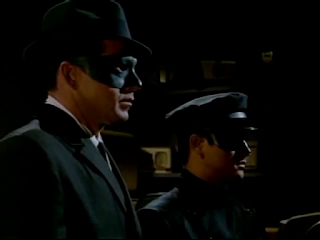
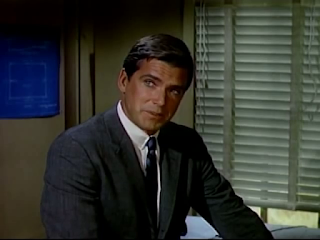

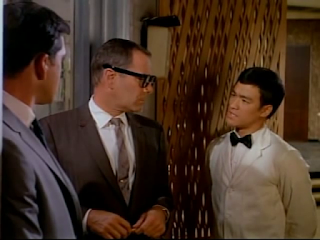
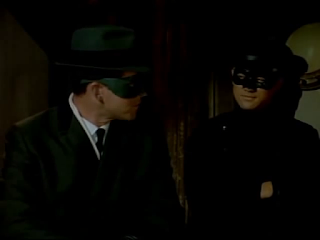
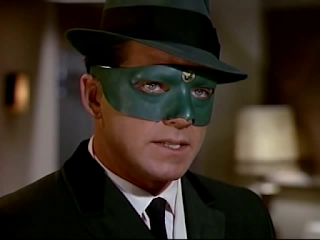
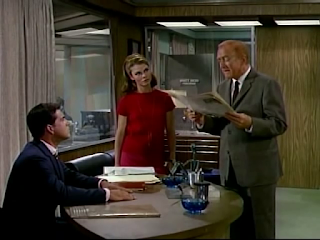
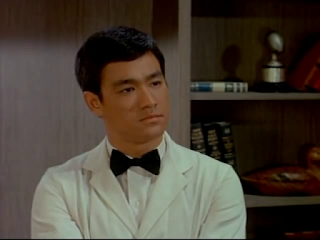
No comments:
Post a Comment